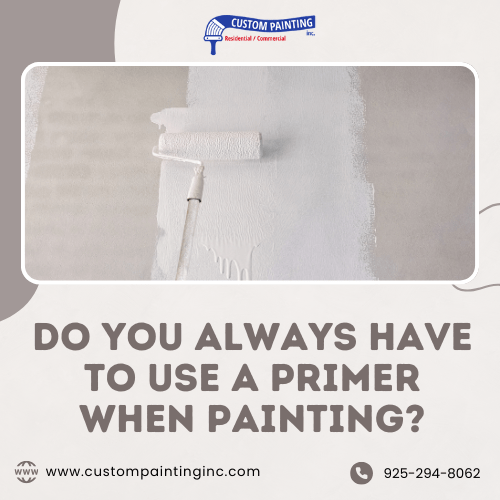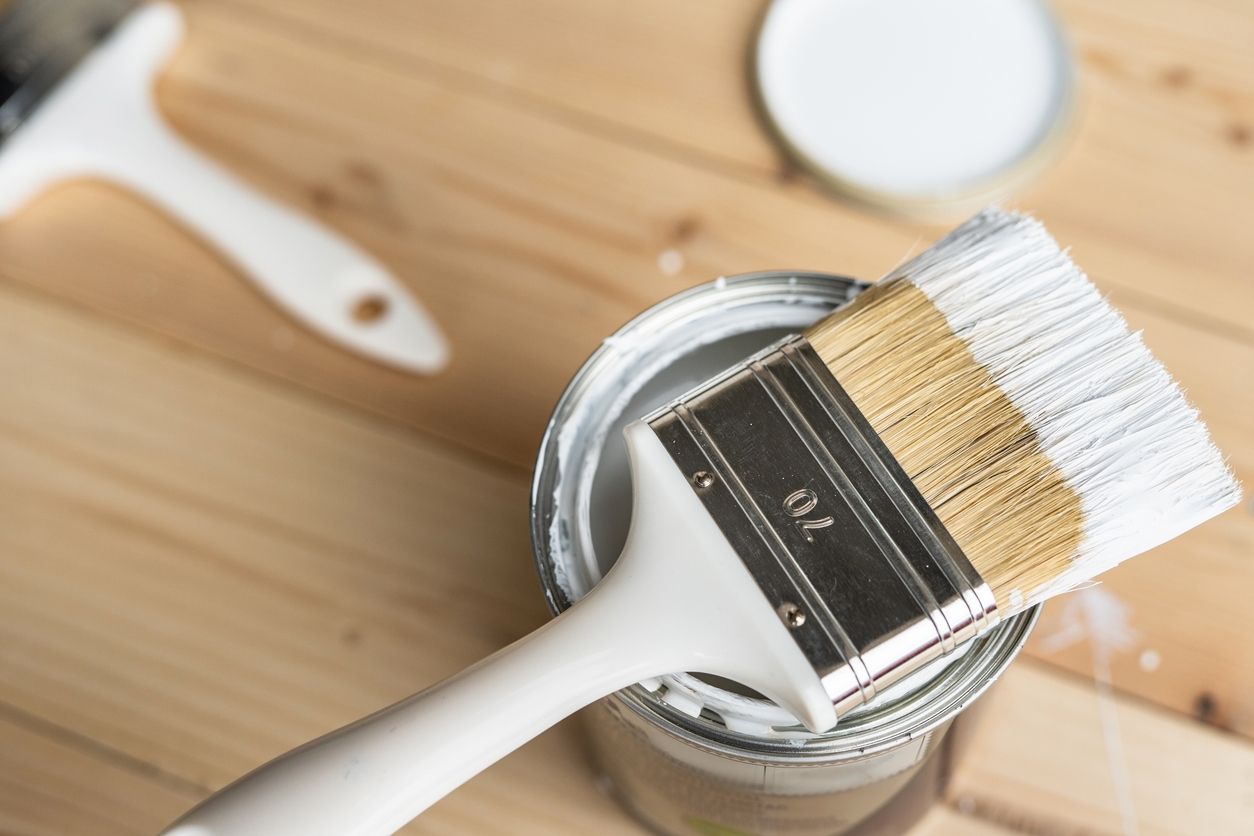If you hired painters to paint your home before, you might have seen them applying a white coating before applying paint. That white coating is called a primer, a preparatory coating used on the surface before painting.
But do you always have to apply a primer when painting? To know when you should use it, you must understand what primer types are available and their intended use.
What is a Primer, and What are Its Functions?
A primer is a type of preparatory coating applied to materials before painting. Primers are designed to ensure better paint adhesion to the surface, increase paint durability, and provide additional protection for the material you paint. Here’s a breakdown of the key functions and benefits of using a primer:
- Adhesion: Primers create a bonding layer that helps the topcoat of paint adhere more effectively to the surface.
- Sealing: They can seal porous surfaces like wood or drywall, preventing the paint from being absorbed unevenly.
- Stain blocking: Primers can block stains from bleeding through the topcoat, which is particularly useful for covering up water stains, smoke, or other discolorations.
- Rust prevention: Metal primers contain corrosion inhibitors that help prevent rust and extend the lifespan of the paint job.
- Smoothing: They can help smooth out minor imperfections on the surface, resulting in a more even and attractive finish.
What are the Types of Primers?
Here are the common types of primers:
1. Oil-based primer:
- Recommended for both interior and exterior surfaces.
- Excellent stain-blocking properties.
- It takes longer to dry.
- It requires a paint thinner or mineral spirits for cleanup.
- Best for wood, metal, and surfaces previously painted with oil-based paint.
2. Latex primer (water-based primer):
- Dries fast
- Easy to clean up with only soap and water.
- Less odor compared to oil-based primers.
- Suitable for drywall, softwoods, brick, and concrete.
- It is not as effective at blocking stains or covering odors as oil-based primers.
3. Shellac primer:
- Very effective at blocking stains, odors, and knots in wood.
- It dries quickly and provides a smooth finish.
- Suitable for both interior and exterior surfaces.
- It can be more challenging to work with and requires denatured alcohol for cleanup.
4. Bonding primer:
- Designed to adhere to difficult surfaces like glass, tile, and plastics.
- Ensures that paint sticks to surfaces that would otherwise reject paint.
5. Stain-blocking primer:
- Specifically formulated to cover and seal stains from water, smoke, ink, and tannins.
- It prevents stains from bleeding through the topcoat.
6. Multi-purpose primer:
- It is versatile and can be applied on various surfaces.
- It combines several properties such as stain-blocking, adhesion, and sealing.
7. PVA primer (polyvinyl acetate):
- Used primarily for new drywall.
- It seals the porous surface of the drywall and provides a good base for the paint.
8. Rust-inhibitive primer:
- Designed for metal surfaces to prevent rust and corrosion.
- Can be oil-based or water-based.
Choosing the right primer depends on the surface you’re working with and the specific requirements of your project.
When Do You Use a Primer?
Although a primer enhances the overall paint finish, the question is whether it is necessary for every paint job.
Professional painters once recommended priming the surface in nearly every paint job. But with premium paints and high-quality self-priming paints on the market, many DIY and even professional painters may never need to open a can of primer.
These premium and high-quality self-priming paints have pretty good adhesive properties. They also help considerably with coverage, especially when hiding flaws or making a dramatic color change. Not to mention they can also save you time, effort, and money.
It doesn’t mean, though, that a primer is not needed anymore. Most professional painters still recommend using a separate primer before applying paint.
You don’t always have to use a primer. However, the following situations require it:
- New drywall: Fresh drywall has a porous surface that absorbs paint unevenly. Primer seals the surface, providing an even base for the paint.
- Unpainted wood: Wood surfaces, especially those with tannins like cedar or redwood, can bleed through paint. A primer seals the wood and prevents this bleed-through.
- Bare metal: Metal surfaces can rust or have a glossy finish that paint won’t adhere to well. A primer designed for metal helps with adhesion and rust prevention.
- Stained or damaged surfaces: If you’re painting over a wall with stains, smoke damage, or watermarks, a stain-blocking primer will help cover these issues.
- Glossy surfaces: Paint doesn’t adhere well to glossy surfaces, so using a primer ensures better adhesion.
- Color change: If you’re making a drastic color change (especially from dark to light), a primer helps cover the old color and reduces the number of paint coats needed.
- Porous surfaces: Surfaces like brick, masonry, or concrete can absorb a lot of paint. A primer helps to seal these surfaces and create a smooth base for painting.
- Repair work: Patched areas or areas repaired with spackle or joint compound should be primed to ensure even paint coverage.
When Do You Not Use a Primer?
You might not need a paint primer in the following situations:
- Repainting similar colors: If you are repainting a wall with the same or similar color, you may not need a primer. High-quality paints often have good coverage and adhere well to previously painted surfaces.
- Self-priming paints: Some paints are labeled as “self-priming,” meaning they include primer within the paint. These can be used directly on bare or previously painted surfaces.
- Clean and non-porous surfaces: If the surface is clean, non-porous, and in good condition (without any stains, peeling, or cracking), you might not need a primer. It is often the case with pre-painted, non-porous surfaces like metal or some plastic.
- Low-traffic areas: For areas that don’t get a lot of wear and tear, like ceilings, a primer may not be necessary if you’re using quality paint.
- Painting over light colors: If you are painting a light color over another light color, you may not need a primer, as the new paint can cover the old color easily.
Conclusion
While a primer is not always necessary, it is essential in some situations to ensure a smooth and durable finish. Generally, a primer creates a uniform surface that helps the paint adhere better and last longer, providing a professional-looking finish.
The situations mentioned in this article can help determine whether you require a primer for your next painting project. You can always rely on Custom Painting, Inc.’s paint experts for advice, tips, and assistance. Or if you decide to hire our services, you can request an estimate – we always provide estimates free of charge! Call us at 925-866-9610 or message us via our contact form.


